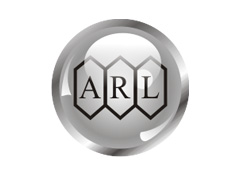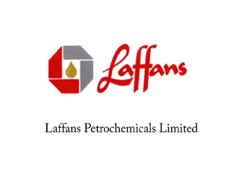(Industrial & Commercial for Process & Comfort)

REFCON also, develops Clean Rooms of required GMP standard as per WHO code and as per client's requirement.
Capacities Temperature, Refrigerant and the choice of ancillaries can be tailored individual requirement.
If you're in search of the ideal solution to maintain a comfortable environment within your industrial or commercial facility, your quest ends here. Air Conditioning Plants by Refcon Chillers offer the perfect answer. We are experts in the field of Industrial Air Conditioning Plants and chilling plant solutions, customizing our offerings to your unique requirements. As premier industrial chiller manufacturers and chilling plant manufacturers, our commitment is to provide the precise climate control you demand for both process and comfort in your workspace.
Why Industrial Air Conditioning Plants Matter
In today's competitive industrial and commercial landscape, ensuring a controlled climate within your facility is paramount. Unpredictable temperatures can lead to equipment malfunction, decreased productivity, and discomfort for your workforce. Our Industrial Air Conditioning Plants are designed to mitigate these challenges and elevate your operational efficiency. We understand the importance of custom solutions for different industries and offer chilling plants that cater to your specific needs.Customized Solutions
We understand that every industrial and commercial space is unique, which is why we offer customized air conditioning and chilling plant solutions. Our team of experts will assess your facility's requirements, taking into account factors such as size, layout, and environmental conditions, ensuring your chiller and chilling plant meet both your process and comfort needs.Cutting-Edge Technology
Our Industrial Air Conditioning Systems and industrial chilling plants incorporate state-of-the-art technology, guaranteeing peak performance and energy efficiency. As reputable manufacturers of industrial air conditioning systems and chilling plants, our dedication lies in delivering solutions that not only cool your facility but also slash your operational expenses.Competitive Advantage
In a competitive market, staying ahead of the curve is essential. By investing in our Industrial Air Conditioning Plants and chilling plant solutions, you gain a competitive edge. A controlled environment leads to fewer equipment breakdowns, increased employee comfort, and improved overall productivity, both for your processes and the well-being of your team.Maintenance and Support
We don't just install and forget. We offer comprehensive maintenance and support services for both our Industrial Air Conditioning Plants and chilling plants to keep your air conditioning system in peak condition. Regular inspections and prompt repairs ensure uninterrupted cooling for your industrial or commercial facility.Trusted by Industry Leaders
Join the ranks of industry leaders who trust Refcon Chillers for their air conditioning and chilling plant needs. We have a proven track record of delivering top-notch solutions to a wide range of businesses across various industries, making us the preferred choice among industrial chiller manufacturers and chilling plant manufacturers.Different Types of Air Conditioning Plants
Air conditioning plants encompass a wide variety of systems, each tailored to specific cooling needs and environments. These systems play a vital role in ensuring comfort and productivity in diverse settings, including homes, offices, and large industrial facilities. Let's delve into some common types of air conditioning plants:
Central Air Conditioning Systems: Widely employed in commercial buildings and large residential properties, central air conditioning plants efficiently distribute cool air through ducts and vents. They comprise a central unit responsible for cooling and dehumidifying the air, ensuring consistent temperature control throughout the designated space.
Packaged Air Conditioning Systems: When indoor space is limited, packaged AC units combine the functions of both evaporator and condenser into a single unit, commonly used in smaller commercial spaces or homes.
Chilled Water Systems: Found in larger commercial and industrial applications, chilled water systems circulate chilled water through pipes and coils, ensuring precise temperature control and suitability for extensive spaces.
Variable Refrigerant Flow (VRF) Systems: Known for their high energy efficiency, VRF systems can provide simultaneous heating and cooling in different zones, often preferred in commercial buildings where flexibility and energy savings are crucial.
The choice of an air conditioning plant depends on factors such as space size, climate conditions, energy efficiency requirements, and budget. Choosing the appropriate system is crucial for achieving optimal comfort and efficiency, ensuring your cooling needs are effectively met. Whether a centralized or decentralized approach is needed, there is an air conditioning plant type for every environment and requirement
Contact Us
Ready to enhance your industrial or commercial space with a reliable air conditioning plant or chilling plant solution? Get in touch with us today. Our team of experts is eager to discuss your requirements, provide a customized solution, and answer any questions you may have. At Refcon Chillers, we take pride in delivering Industrial Air Conditioning Plants and chilling plant solutions that set the industry standard. Elevate your facility's performance with our state-of-the-art solutions. Don't let temperature fluctuations hinder your success; choose Refcon Chillers for reliable, efficient, and cost-effective air conditioning and chilling systems.Frequently Asked Questions
An air conditioning plant refers to the collection of machinery and equipment within a building that serves the vital function of heating, cooling, or circulating air within the premises. This includes all the essential components responsible for regulating the indoor climate. Any changes, enhancements, or substitutions made to this machinery and equipment are also considered part of the air conditioning plant. In simple terms, it's the system in charge of making sure your indoor environment remains comfortable by controlling temperature and air circulation. Whether it's keeping you warm in the winter or cool in the summer, the air conditioning plant is the behind-the-scenes hero that maintains your desired indoor climate.
An industrial air conditioning system is very useful in the industrial industry because it helps regulate the temperature and humidity levels, creating a comfortable and safe working environment for employees. It also helps prevent equipment overheating and damage, improving productivity and reducing maintenance costs.
An industrial air conditioning system typically consists of several key components, including compressors, condensers, evaporators, expansion valves, and air handling units. Compressors increase the pressure and temperature of the refrigerant, condensers release heat from the refrigerant, evaporators facilitate heat absorption, expansion valves regulate refrigerant flow, and air handling units distribute the cooled air.
The functioning of an air conditioning plant is rooted in the fundamental concept of phase conversion. This principle involves the transition of a substance from one state, like changing from a liquid to a gas. This shift from liquid to gas results in the absorption of heat. Air conditioning systems harness this principle to cool indoor spaces effectively.
-

Enquire Now




